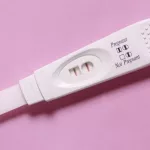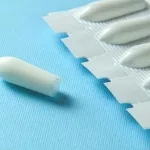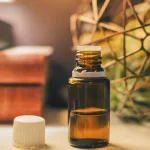Let’s cut straight to the chase: if you have polycystic kidney disease (PKD), the odds that a brain aneurysm will pop up are noticeably higher than in folks without PKD. That’s the headline you’ve probably seen in a doctor’s office or online, and it can feel a bit scary. But here’s the good news – knowing the risk, spotting the signs early, and taking smart preventive steps can keep you a long way from any serious trouble. Think of this article as a friendly chat over coffee, where I’ll walk you through what you need to know about PKD brain aneurysm risk and how to manage it.
Why the Risk
PKD isn’t just a kidney thing. The same genetic mutation that makes those fluid‑filled cysts in your kidneys also weakens the walls of certain arteries, especially the tiny vessels that criss‑cross the brain. Researchers have found that people with autosomal‑dominant PKD (ADPKD) have a higher prevalence of dolichoectasia – a fancy term for “stretchy” or elongated vessels – which puts extra pressure on the vessel walls. That combination of structural weakness and high blood pressure creates a perfect storm for an aneurysm to form.
According to a study published in the Clinical Journal of the American Society of Nephrology, the genetic backdrop of ADPKD directly contributes to vascular abnormalities, including intracranial aneurysms. Add on lifestyle factors like uncontrolled hypertension or smoking, and the risk climbs even higher. In short, your kidneys and your brain share a genetic secret that can affect both.
How Common
Numbers help put things in perspective. In the general population, roughly 3 out of every 100 people have a brain aneurysm. For those living with ADPKD, that figure jumps to somewhere between 9 % and 12 % – that’s nearly one in ten. A large Mayo Clinic cohort of 3,010 ADPKD patients showed that around 5 % of them experienced a rupture, which is about five times the rate seen in people without PKD.
Even though the absolute risk of a rupture remains under 2 % over a decade, the fact that a rupture can happen 10‑15 years earlier than in non‑PKD patients means you can’t afford to ignore it. The good part? Most aneurysms are small and stay stable for years, especially when you keep the usual risk factors in check.
| Group | Prevalence of Aneurysm | Rupture Rate (10 yr) |
|---|---|---|
| General Population | ~3 % | ~0.4 % |
| ADPKD Patients | 9‑12 % | ~2 % |
Screening Rules
Screening is the cornerstone of staying ahead of a potential problem. The ideal test is a non‑contrast magnetic resonance angiography (MRA), which visualises the brain’s blood vessels without exposing you to radiation. Here’s a quick checklist to decide if you should get screened now:
- Family history of aneurysm or subarachnoid hemorrhage (SAH). If a parent, sibling, or cousin had one, the odds double.
- Before major elective surgery. Procedures like kidney transplantation involve anesthesia and blood‑pressure fluctuations, so many doctors order a baseline MRA.
- High‑risk occupations. Pilots, divers, or anyone who can’t afford a sudden neurological event should consider screening.
- Uncontrolled hypertension or smoking history. Even without a family history, these lifestyle factors tip the scale toward screening.
If you fall into any of those categories, talk to your nephrologist about arranging an MRA. For those without obvious risk factors, many experts suggest a baseline scan at diagnosis and then a repeat every 5‑10 years, especially if new risk factors appear.
Symptoms to Watch
Most brain aneurysms are silent – they don’t cause any symptoms until they burst. However, some larger or strategically placed aneurysms can give subtle hints:
- Sudden, “worst‑ever” headache. Think of it as a thunderclap that peaks in seconds.
- Vision changes. Double vision, blurred sight, or eye pain can mean an aneurysm is pressing on a nerve.
- Nausea, vomiting, or loss of consciousness. These are red‑flag signs of a possible rupture.
- Facial numbness or weakness. If an aneurysm presses on a brain region controlling facial muscles, you might notice a twinge.
If any of these occur, call emergency services immediately. Time is brain – the faster you get treatment, the better the outcome.
Managing PKD
Now that you know the risk, let’s talk about the everyday steps you can take to keep it low. The mantra is simple: control what you can, stay informed, and partner with your care team.
Blood‑Pressure Control
Keeping your systolic pressure under 130 mm Hg is a proven way to reduce aneurysm growth. ACE inhibitors or ARBs are often first‑line in PKD because they also protect kidney function. Regular home BP checks (twice a day) and a medication adherence plan can make a world of difference.
Quit Smoking
Smoking raises the “aneurysm‑forming” hormone levels and stiffens arterial walls. If you’re a smoker, consider the quit‑line, nicotine patches, or a support group. It’s one of the most impactful changes you can make for both your kidneys and your brain.
Healthy Lipids
While a 2021 study observed a surprising inverse relationship between hypercholesterolemia and high‑risk aneurysms, that’s likely a statistical quirk. Follow standard cholesterol‑lowering guidelines because heart health and brain health go hand‑in‑hand.
Regular Nephrology Follow‑up
Your kidney doctor should coordinate with a neurovascular specialist when an aneurysm is found. This “team‑up” approach ensures that imaging schedules, blood‑pressure meds, and lifestyle counseling are all aligned.
Weekly Tracker
Keeping a simple log can turn healthy habits into a routine. Write down your BP reading, medication taken, cigarettes avoided, and minutes of light exercise. Over time you’ll see patterns and can celebrate small victories.
Treatment Options
Finding an aneurysm doesn’t automatically mean you need surgery. Decision‑making balances aneurysm size, location, and your personal risk profile.
Observation
Small aneurysms (<5 mm) in low‑risk locations are often watched with periodic imaging. The risk of intervention sometimes outweighs the chance of rupture for these "quiet" lesions.
Endovascular Coiling
This minimally invasive technique involves threading a tiny coil into the aneurysm to fill it, preventing blood flow inside. It’s the go‑to for many because it’s less invasive than open surgery and has a success rate of about 85‑90 %.
Surgical Clipping
When an aneurysm has a wide neck or sits in a tricky spot, a neurosurgeon may opt for clipping. This involves a small craniotomy (skull opening) and placing a metal clip at the aneurysm’s base. Though more invasive, it offers a 90‑95 % cure rate for select cases.
| Technique | Invasiveness | Success Rate | Common Complications |
|---|---|---|---|
| Coiling | Endovascular | 85‑90 % | Small ischemic events |
| Clipping | Craniotomy | 90‑95 % | Infection, longer recovery |
Both approaches have their pros and cons, and a neuro‑vascular specialist will tailor the recommendation to your specific anatomy and health status.
Take‑Action Plan
Alright, let’s stitch everything together into a practical checklist you can start using today.
- Know your family history. Ask relatives about any aneurysms or unexplained strokes.
- Get a baseline MRA. If you haven’t had one, talk to your doctor about scheduling it.
- Control blood pressure. Aim for <130/80 mm Hg and keep a home log.
- Quit smoking. Even cutting back dramatically lowers your risk.
- Stay active. Gentle aerobic exercise (walking, cycling) supports vascular health.
- Schedule regular follow‑ups. Every 1‑2 years with your nephrologist, and as advised by a neuro‑vascular team.
- Know the warning signs. If a thunderclap headache or vision change hits, call 911.
Living with PKD can feel like you’re walking a tightrope, but you have a sturdy safety net when you’re armed with the right information. By understanding the PKD brain aneurysm risk, staying proactive with screenings, and living a heart‑healthy lifestyle, you dramatically tilt the odds in your favor.
Feel free to share your own experiences in the comments, or ask any lingering questions – I’m here to help. Remember, knowledge is power, and together we can keep both kidneys and brains humming along nicely.


















Leave a Reply
You must be logged in to post a comment.